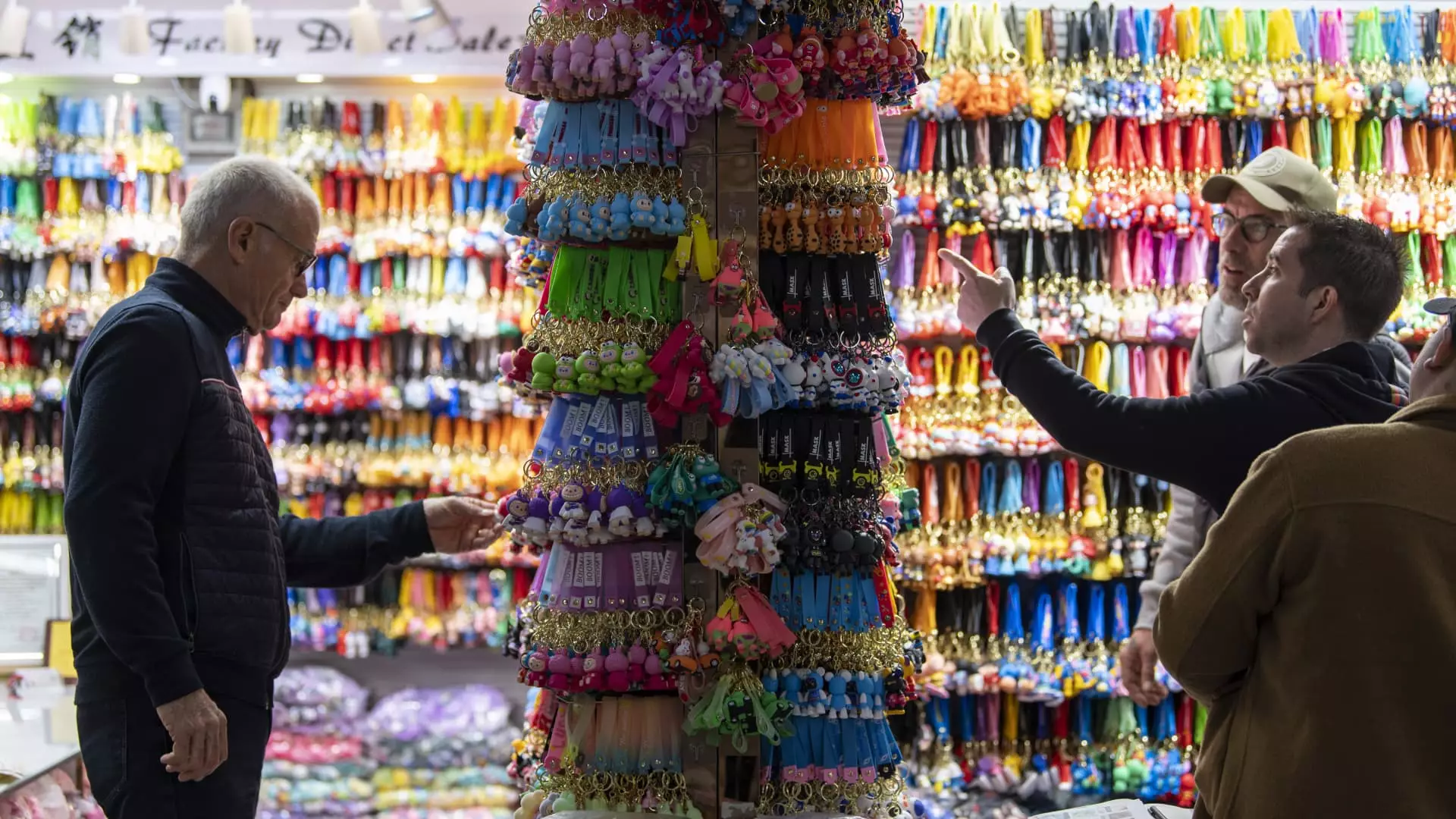In recent years, the holiday shopping season has extended earlier into the calendar year, a trend aptly dubbed “Christmas creep.” Retailers across the United States anticipate lucrative gains in sales, and their eagerness to stock stores with festive merchandise often leads to aisles adorned with Christmas goods long before Thanksgiving. However, looming tariffs on imports from China pose a serious threat to this annual frenzy. This article examines the intersection of tariffs, production delays, and the overall impact on the holiday shopping landscape.
The situation has become more complex as the U.S. government, under President Donald Trump, announced significant tariffs on a range of goods from China, initially introducing a staggering 34% tariff that later escalated to as much as 145%. This drastic action has sent shockwaves through retail supply chains, prompting many American companies to pause their orders from Chinese factories. The immediate result has been a production slowdown, as manufacturers scramble to adjust their operations in response to the changing cost structures.
Production Pauses: The Ripple Effect on Supply Chains
When American retailers halt orders, the consequences ripple across the manufacturing landscape. Factories, once bustling with activity, find themselves idling as uncertainty disrupts the flow of goods. Cameron Johnson, a senior partner at Tidalwave Solutions based in Shanghai, emphasizes the urgency of resuming production. He warns that if factories do not ramp up output soon, they might miss pivotal shopping days such as Black Friday and Christmas.
A critical aspect of the issue lies in the interconnected nature of manufacturing. For instance, if a factory producing utensils halts operations, it inevitably affects the suppliers of raw materials like steel and iron ore. Johnson points out that halting orders doesn’t solely impact finished goods; it threatens the entire supply chain ecosystem, risking prolonged delays even after a resolution is reached.
Logistical Nightmares and Shipping Delays
As many retailers previously began stockpiling merchandise in anticipation of higher tariffs, a paradox has emerged. While some U.S. imports from China increased by over 9% in one month, indications from leading shipping analysts signal that container shipments have dramatically decreased in recent weeks. Companies are already witnessing cancelled orders surge to unprecedented levels. According to Morgan Stanley’s analysis, the number of cargo-carrying vessels making the journey from China has sharply declined, with cancelled shipments increasing 14 times compared to earlier periods.
Manufacturers such as Renaud Anjoran, CEO of Agilian Technology, underscore the precarious timing of production cycles. For example, electronic goods must clear customs well in advance of the Christmas season. This situation places immense pressure on factories to begin preparations as early as March. However, as many American buyers temporarily halt their purchases to assess the tariff landscape, factory production wanes, creating a bottleneck that could spell disaster for timely delivery.
The Gambit: Waiting and Watching
Retailers and manufacturers find themselves in a peculiar game of wait-and-see. Some U.S. importers are holding off on new orders in the hopes that tariff rates may drop. Ryan Zhao, a director at Jiangsu Green Willow Textile, reveals that production has been halted for U.S. orders, as clients await clearer signals from policymakers. This cautious approach is indicative of a broader strategy among businesses that are wary of long-term commitments amid fluctuating tariffs.
An interesting aspect of this situation is how businesses are responding to these challenges. Reports have emerged suggesting that the Chinese government is considering exemptions for specific goods—ranging from pharmaceuticals to electronics—as part of reciprocal measures to mitigate the financial fallout of tariffs. This evolving landscape adds a layer of complexity, prompting companies to adopt a more strategic position regarding orders and inventory management.
Anticipation and Anxiety: The Role of Big Retailers
Big retailers like Walmart and Target are becoming increasingly proactive in the face of this dilemma. Some manufacturers have received green lights from these giants to restart production. Martin Crowley, vice president at Toysmith, elaborates that American retailers are proactive in timing their orders to ensure they benefit from current pricing before potential tariff increases kick in. They are encouraging customers to place orders earlier in the season, showcasing a delicate balancing act of supply management and price forecasting.
The overarching threat remains that if a breakthrough occurs in trade negotiations, there could be a rush to refill orders swiftly. However, this could inadvertently drive up costs for manufacturers, as the pressures of timed production could lead to an overwhelmed supply chain. The looming risk of increased air shipping costs could further complicate matters, making it essential for businesses to plan carefully irrespective of the uncertain tariff environment.
Navigating the complexities of tariffs, production, and shipping amidst the holiday shopping season poses a considerable challenge for retailers. As Christmas creeps closer, the retail sector finds itself standing on shifting sands, with much at stake for both businesses and consumers alike.

